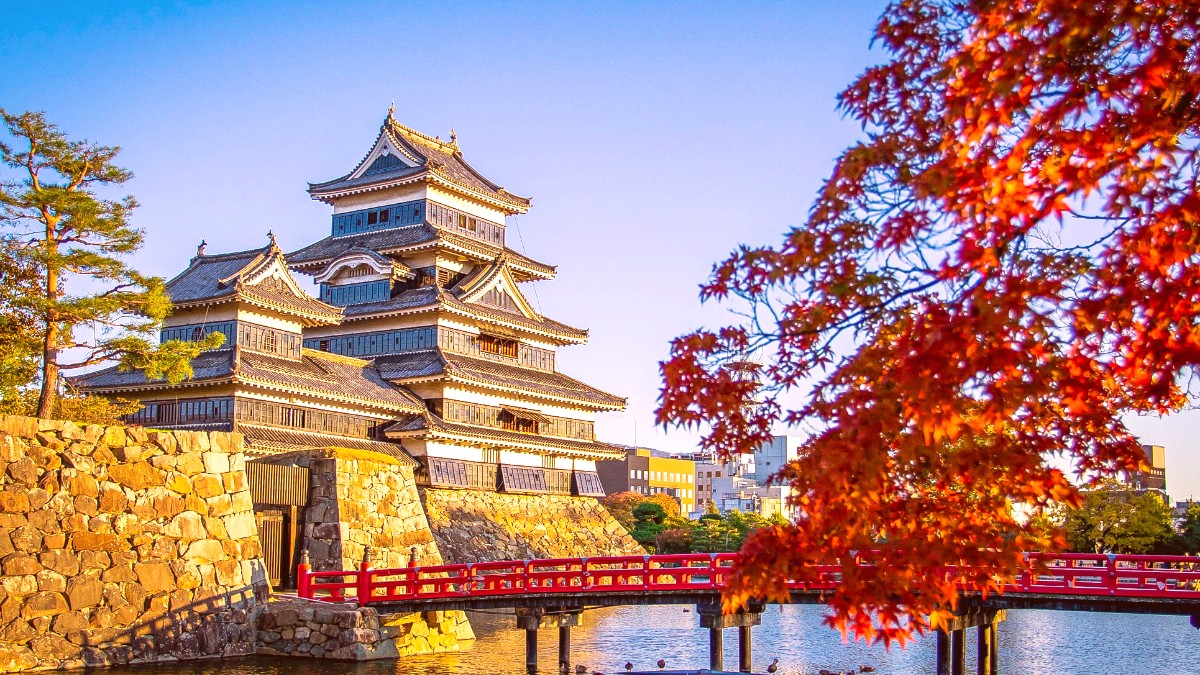
Central Honshu, Japan
Matsumoto's cuisine reflects its geographical setting and historical development, with an emphasis on fresh, local ingredients and time-honored traditions. The Shinshu region (Nagano Prefecture) is celebrated for its pristine water, crisp mountain air, and abundant fresh ingredients. Historically, Matsumoto's location on trade routes led to a blend of local culinary traditions with influences from other regions.
The pure water from the Japanese Alps significantly shapes the quality of local sake and soba. Cuisine often features mountain vegetables (sansai), freshwater fish, and produce like apples and buckwheat (soba).
A specific local specialty of Nagano Prefecture. Thinly sliced raw horse meat, often served with grated ginger, garlic, and soy sauce.
Traditional Nagano dumplings. Steamed or grilled and typically filled with savory ingredients like wild vegetables (nozawana greens), eggplant, or mushrooms.
Due to clear rivers, freshwater fish like trout (iwana and ayu) are popular, often grilled whole or served as sashimi.
Buckwheat noodles, a regional delicacy. Enjoy them cold with a dipping sauce (zaru soba) or hot in a savory broth. Many soba restaurants are found throughout Matsumoto.
Find: Nakamachi-dori, near Matsumoto Castle.
Thinly sliced raw horse meat, a local specialty of Nagano Prefecture. It presents a lean and flavorful experience.
Find: Izakayas and specialty restaurants.
Grilled rice cakes on a stick, coated with a sweet and savory walnut-miso sauce. This delicious snack is often found at local festivals or roadside stations.
Find: Local festivals, roadside stations.
Nagano Prefecture is a renowned sake brewing region. Try local jizake (local sake brands). Japan's craft beer scene is also growing here.
Rich, sweet apple juice from local Nagano apples. Wasabi-flavored snacks like crackers, chips, senbei, and even wasabi ice cream.
Upscale hotels and traditional ryokans in nearby onsen towns often present exquisite multi-course kaiseki meals. These culinary journeys focus on seasonal and local ingredients with artistic presentation.
Mid-range restaurants are plentiful, serving diverse Japanese cuisines like tempura, sushi, ramen, udon, and tonkatsu. Izakayas, Japanese pubs, also present a lively and casual dining experience.
For affordable and quick meal choices, convenience stores are a good option. Many small, specialized shops serve delicious and inexpensive noodle bowls. Nawate-dori also has small shops with snacks.
Local Supermarkets are good for fresh produce and pre-made meals. Matsumoto Citizen's Market offers fresh seafood and local groceries.
Authentic daily life glimpse.
While Japanese cuisine predominates, a limited selection of international restaurants (Italian, Chinese, other Asian) exists.
Major cities like Tokyo or Osaka present a wider variety.
Improving, but traditional dashi is common. Use HappyCow app.
Challenging due to soy sauce. Translation cards are a good idea.
Very scarce outside major cities.
Use apps and dietary cards for communication.
Experience the lively and communal atmosphere of a Japanese izakaya. These casual pubs present a wide variety of small dishes (tapas-style) for sharing, along with drinks.
Good for sampling various foods in a relaxed setting.
The multi-course kaiseki meals served in traditional ryokans present an unique and immersive culinary experience. They highlight seasonality, local ingredients, and artistic presentation, often in a private dining room.
A deep dive into Japanese dining traditions.
Check local Matsumoto tourism websites for seasonal food festivals, agricultural fairs, or sake tasting events.
Meal times are generally 7-10 AM for breakfast, 11:30 AM-2:00 PM for lunch (with value sets), and 5:00 PM-9:00 PM for dinner (last orders 30-60 mins before closing).
Finding strictly vegetarian or vegan options is improving, especially in tourist areas. Traditional Japanese cuisine often uses dashi (fish stock) as a base for many dishes.
Many dishes, including miso soup and noodle broths, contain dashi. Specify "no fish, no meat, no dashi" for clearer communication.
Convenience stores present more clearly labeled vegan-friendly options like salads, fruits, and specific types of onigiri.
Google Translate or DeepL can provide real-time communication with restaurant staff.
A good tool for clarity.
Print out cards in Japanese clearly stating your dietary restrictions. Search "Japanese Restaurant Card for Allergies" for examples.
A critical item for strict dietary requirements.
For strict dietary needs, research specific restaurants or ingredients before your trip.
Convenience stores often have clearly listed ingredients on packaged foods, making them a safe choice.
Consider bringing some non-perishable snacks or meal components if dining options are a concern.
Japanese restaurant staff are generally very accommodating, but clear, polite communication is , especially with dietary restrictions.